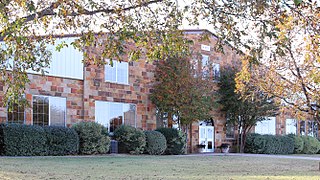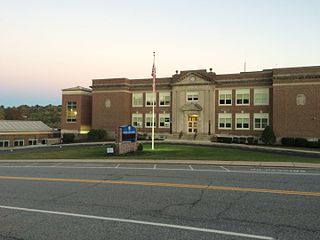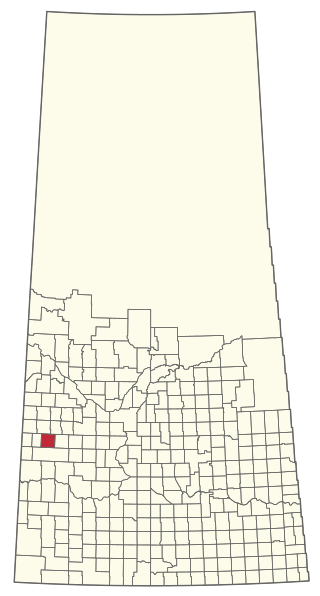Related Research Articles
Coleville is a village in the Canadian province of Saskatchewan within the Rural Municipality of Oakdale No. 320 and Census Division No. 13. The village's main economic factors are oil and farming, namesake of the Coleville oilfields. The village is named for Malcolm Cole who became the community's first postmaster in 1908.

One-room schools, or schoolhouses, were commonplace throughout rural portions of various countries, including Prussia, Norway, Sweden, the United States, Canada, Australia, New Zealand, the United Kingdom, Ireland, and Spain. In most rural and small town schools, all of the students met in a single room. There, a single teacher taught academic basics to several grade levels of elementary-age children. While in many areas one-room schools are no longer used, some remain in developing nations and rural or remote areas where scarce students and/or teachers complicate organizing the educational process differently.

The Middle Country Central School District (MCCSD) covers approximately 16 square miles (41 km2) in the Town of Brookhaven, Suffolk County, New York, United States.
Craftsbury Schools is the public school system serving students from the town of Craftsbury, Vermont, a town on the southern tip of Orleans County. The school includes grades kindergarten through twelve, along with a number of tuition students from neighboring towns in grades seven through twelve. The main campus is located on Craftsbury Common, though the school system maintains an elementary school in the village nearby.
The Edina School District is the public school system for most of the city of Edina, Minnesota. It is also referred to as the Independent School District (ISD) 273. There are approximately 8,500 students, K-12, served by 1139 teachers and support staff in six elementary schools, two middle schools and one high school.
Bluff Dale Independent School District is a public school district based in the community of Bluff Dale, Texas.
Liberty-Eylau Independent School District is a public school district in southeastern Bowie County, Texas, United States.

The Huckabay Independent School District is a public school district based in the community of Huckabay, Texas. The district has one school, Huckabay School, that serves students in grades kindergarten through twelve.

Carmel High School is a public high school in Carmel, New York, currently serving grades 9-12. It is the only high school in the Carmel Central School District. The district includes part of Carmel, and part or all of several nearby towns, mostly in Putnam County, New York but also includes a small number of students from Dutchess County.

The Rural Municipality of Oakdale No. 320 is a rural municipality (RM) in the Canadian province of Saskatchewan within Census Division No. 13 and SARM Division No. 6. Located in the west-central portion of the province, it is near the Alberta boundary.

Avilla R-13 School District or Avilla R-XIII School District is a rural public elementary and middle school located in Avilla, Missouri, USA. For grades kindergarten through eight, it is the only school in the district. In the 2000 census, the district schooled 153 pupils and had 13 teachers on staff. Programs include basketball and agriculture, and the school boasts a low student to teacher ratio. Avilla is located at 37°11′38″N94°07′44″W, in Jasper County ten miles east of Carthage, Missouri on MO Route 96 and four miles west of the Lawrence County line.

The Plainview-Old Bethpage Central School District (POBCSD) is the public school district which serves the Nassau County, Long Island communities of Plainview and Old Bethpage, as well as small parts of Farmingdale.

Center Cass School District 66 is a public school district located in Downers Grove, Illinois, in DuPage County. The district serves about 1,300 students in grades K-8.

Conestoga Christian School is a private Christian school located in Morgantown, Pennsylvania, United States. Founded in 1952 as an extension of the educational ministry of the Conestoga Mennonite Church, CCS is a non-profit organization providing education for K-12th grade students. The school is accredited by both Association of Christian Schools International (ACSI) and Middle States Association (MSA), and belongs to Mid-Atlantic Christian Schools Association (MACSA) and Lancaster Area Council of Mennonite Schools (LACMS). Conestoga Christian is staffed by 35 faculty members and enrollment is currently 325 students.

Princeton Friends School (PFS) is an independent Quaker day Kindergarten-8th grade school in Princeton, New Jersey. It is under the care of Princeton Monthly Meeting and located on the Meeting's historic Stony Brook Meeting House and Cemetery property, adjacent to both the Institute for Advanced Study Woods and the Princeton Battlefield. The school is governed by a board of trustees that includes members of the Religious Society of Friends, attenders of the Princeton Monthly Meeting, parents of students in the school, and members of the broader Princeton community.

The Dedham Public School System is a PK–12 graded school district in Dedham, Massachusetts. It is the oldest public school system in the United States.

In the United States, elementary schools are the main point of delivery of primary education, for children between the ages of 4–11 and coming between pre-kindergarten and secondary education.

A two-room schoolhouse is a larger version of the one-room schoolhouse, with many of the same characteristics, providing the facility for primary and secondary education in a small community or rural area. While providing the same function as a contemporary primary school or secondary school building, a small multi-room school house is more similar to a one-room schoolhouse, both being architecturally very simple structures. While once very common in rural areas of many countries, one and two-room schools have largely been replaced although some are still operating. Having a second classroom allowed for two teachers to operate at the school, serving a larger number of schoolchildren and/or more grade levels. Architecturally, they could be slightly more complex, but were still usually very simple. In some areas, a two-room school indicated the village or town was more prosperous.
Springs Union Free School District is a public school district located in East Hampton on Long Island, in Suffolk County, New York, United States. It educates students in the hamlet of Springs and the privately-owned Gardiners Island.
References
- ↑ Adamson, J (15 Mar 2006). "Saskatchewan Gen Web - One Room School Project - Alphabetical Schoolhouse Listing". Saskatchewan Gen Web. Rootsweb. Retrieved 2008-04-08.